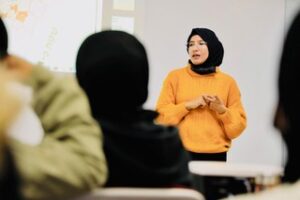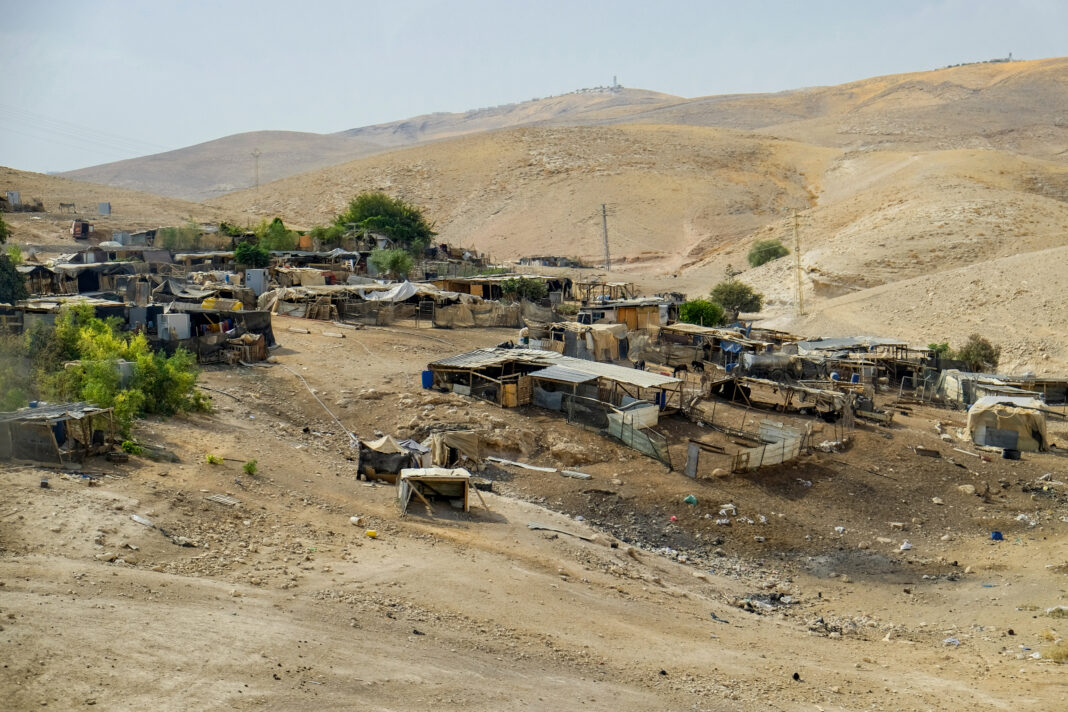by Anna Violante
Two days after the US Congress voted for billions of dollars in new aid to Israel and announced sanctions against far-right settlers and the ultra-Orthodox Netzah Yehuda Battalion for alleged abuses in the West Bank in 2022, dozens of anti-war student protesters have been arrested at prestigious East Coast universities as well as in California. On Monday, it was announced that the head of Israeli military intelligence, Major General Aharon Haliva, had resigned in light of the failures that led to the deaths of 1,200 Israelis during the Hamas massacre on 7 October. On the same day, EU foreign ministers agreed to extend restrictive measures on Tehran’s arms exports, prompting an immediate reaction from Iranian Foreign Minister Hossein Amirabdollahian, who called the decision “regrettable” on the grounds that the country was acting in self-defence.
“Israel has not provided any evidence to support its allegations that many employees of the UN’s main agency for Palestinian refugees (UNWRA) are members of terrorist organisations,” concluded an independent review commissioned by the UN, while making it “very clear” that the question of involvement in 7 October attack was a separate issue, which remained under internal UN investigation. The war on Gaza has so far left at least 34,183 Palestinians dead and 77,143 wounded, with thousands more bodies likely still uncounted under the rubble, according to Gaza’s health ministry. The death toll includes 32 people killed in the last 24 hours. Israel says 260 of its troops have been killed and 1,582 injured in its ground operation in Gaza over the same period. Some other Israeli citizens are victims of this war but they are neither pitied by the international press nor protected by their own country. They are the Bedouins of the Negev desert, about whom we only heard after the Iranian attack on Israel when a little girl of 7 was hit in the head by rocket shrapnel. After almost a week in intensive care, Amina Hassouna reportedly began breathing on her own on Sunday and hopefully, she won’t die. She comes from a village called Al-Fura in the Negev desert, not far from a military base.

To shed light on the dire situation in which the Bedouin live, Atlas of Wars spoke to Huda Abu Obaid, a Bedouin activist with the Negev Coexistence Forum for Civil Equality, an Arab-Jewish association specialising in research and advocacy on the rights of the autochthonous population of the Negev desert.
Huda Abu Obaid, why could the shrapnel reach Amina and what’s wrong with her village?
She was hit because there aren’t any shelters in her village. It is one of the 35 unrecognised villages in the region. Radars and Iron Domes (the powerful Israeli anti-missile system, ed) don’t defend them because they are considered non-existent. Even if people were born there, their homes are regarded as illegal by the authorities, who regularly issue demolition orders. Amina’s family has already received a demolition order, and I know that her brother’s house has been demolished twice, in the same village. To avoid a strong reaction from the whole borough, the houses are demolished one by one and not all at once.
I know that there are also about 11 legal villages. What’s the difference between recognised and unrecognised ones?
It depends on government policy. Whenever a government needs to clear an area, whether to build a settlement or to make way for a mine, a military base or even a nature park, the village inside it has to be destroyed and therefore labelled as illegal or unrecognised. Recognised villages, on the other hand, have the right to exist, but since 7 October they too have had a very hard time.
Have the Bedouin found any help from civil society?
Not very much. As I said, in the unrecognised villages, people have no right to shelter. They cannot build them because it is like building a house. Some charities and other organisations provide some kind of protection, but they are very few. The authorities bring HESCOS, which are temporary shelters without roofs. They are completely useless; in fact, people have died under rockets.
How many Bedouins have been killed since 7 October?
22: 15 in the 7 October attack and 7 by rockets in their villages due to lack of shelter. 4 are still being held hostage by Hamas.
What is life like for Bedouins living in towns?
There are 7 towns in the Negev specially created for Bedouins who have been evicted from their land. People can have a house there with a permit, but that is not the issue. The problem is that the villagers want to stay on their land. They don’t want to leave their villages. The towns are very poor and there’s a lot of violence because too many people are unemployed. Some try to find work in the Jewish towns. Some are looking for work in the Tel Aviv area. Over the decades there have been Bedouins who have improved their standard of living. Today there are teachers, nurses, doctors and professionals, but they are still few, and in recent years the situation has worsened. A recent survey conducted by our association reveals a significant impact on the safety and sense of security of Bedouin society in the Negev, resulting from the conflict between Israel and Hamas. The Bedouins face economic, professional and infrastructural challenges, with high levels of poverty, unemployment, housing shortages and educational deficiencies. Longstanding neglect of their needs has left them particularly vulnerable, with little protection from rockets and inadequate shelter, not only in unrecognised villages. The most marginalised groups within Bedouin society, such as residents of unrecognised villages and those with a non-academic education, suffer even more.
What about education?
There are no high schools in the unrecognised villages, and many families won’t let their daughters go outside the village, so girls don’t complete their education. No Arabs go to Jewish schools nowadays. I went to a Jewish school, it was easier then, we Palestinian students were 20% of the school. But today I can’t imagine going to a Jewish school. You have to have strong children to send them to Jewish schools. They are bullied all the time. The situation between Jews and Palestinians is so tense these days. The Arab schools are very poor. There are no teachers, no headmasters. It’s a policy to keep Arabs, Palestinians and Bedouins under control, to keep them subservient.
On the cover photo, bedouin settlements in the Judean desert near Jericho, Israel ©paparazzza/Shutterstock.com
























